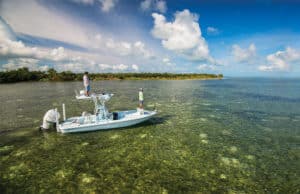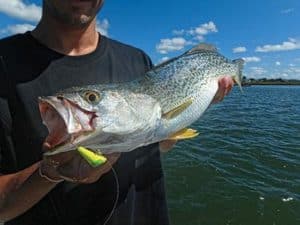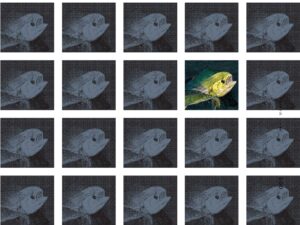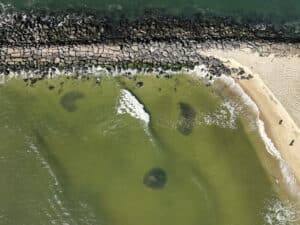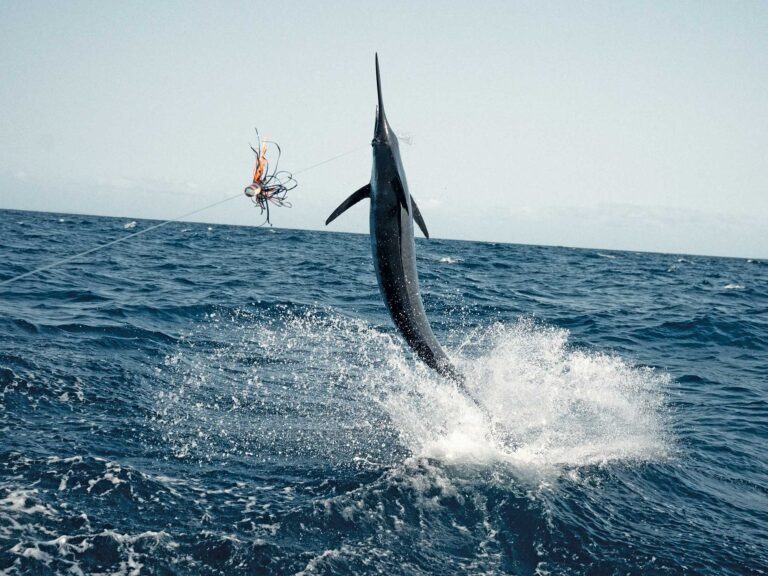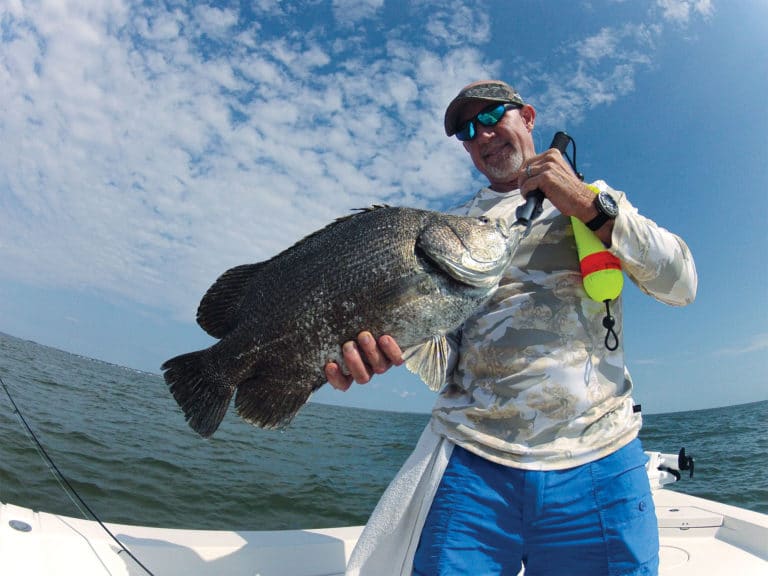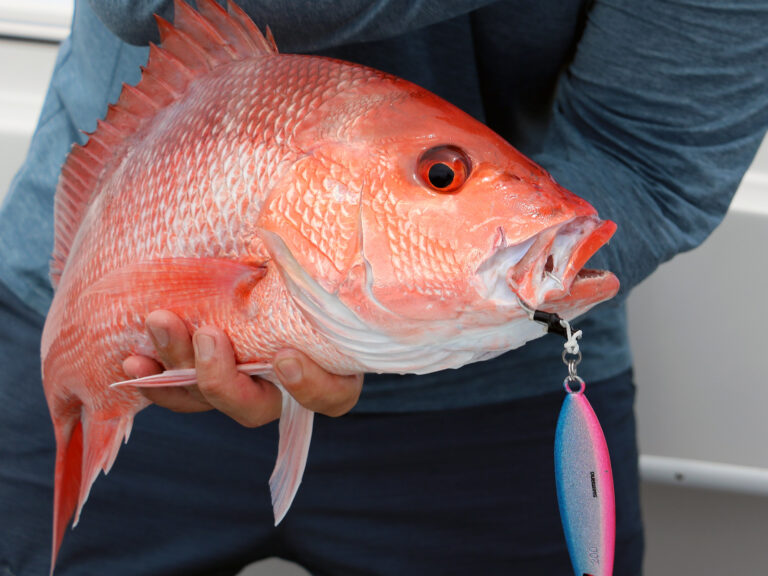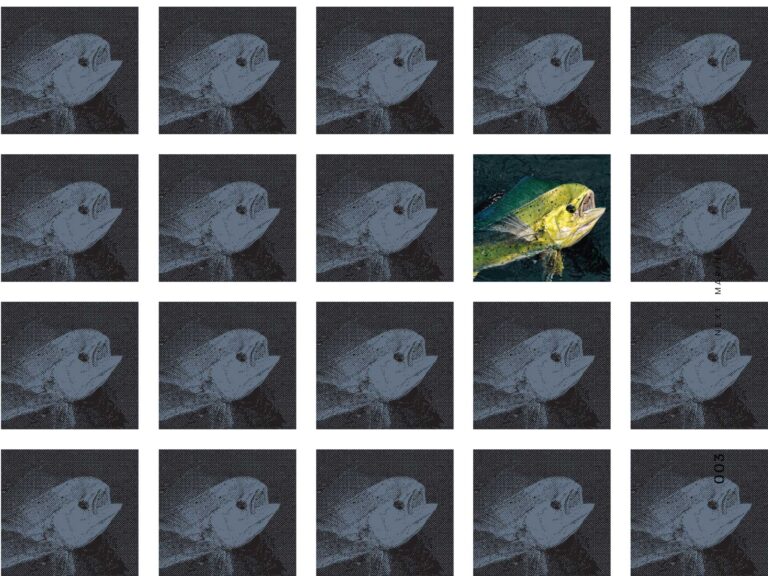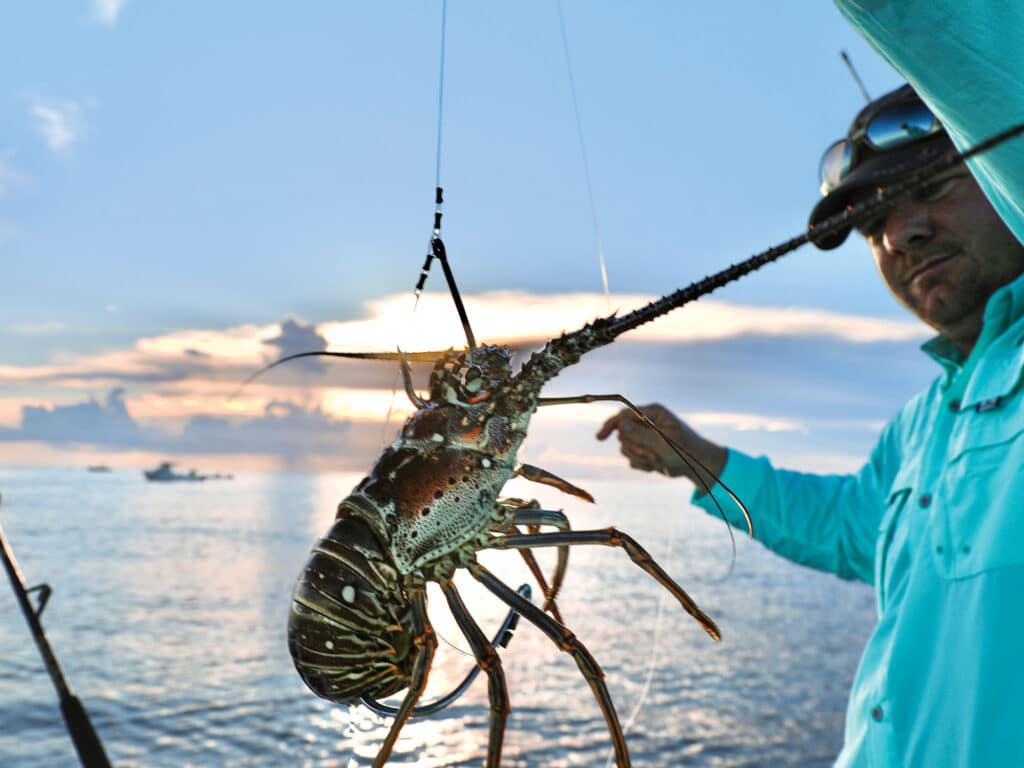
When it comes the live baits, there’s a worn adage. “Elephants eat peanuts” acknowledges that big fish sometimes consume small baits. But is that an exception that proves the rule? Big fish have insatiable appetites and large mouths, hence their inclination to hunt for one or two satisfying meals versus expending energy herding tiny prey. In the offshore world, some prime examples include blue marlin keying in on mahi and tuna, big mahi cannibalizing smaller mahi, and wahoo gorging on tuna. Big fish eat large live baits.
Unleash the Horses
Large and horse ballyhoo, popular for blue marlin, have long been go-to baits when seeking big mahi on the troll. Whereas school mahi readily devour small- and medium-size offerings, oversized ballyhoo are generally too big for them to eat. The more soak time these big ballyhoo receive, the better the chances of hooking a larger mahi. I’ve caught mahi up to 43 pounds using this tactic, along with numerous 20- and 30-pounders. One of the largest mahi I’ve ever seen attacked a splashing mackerel I had out for blue marlin off Walker’s Cay in the Bahamas. Unfortunately, the hook pulled after one amazing jump.
Recently, I’ve been trolling more small and medium ballyhoo for mahi, mainly to generate action for my television series. However, I keep a couple of pitch-bait outfits and large ballyhoo on standby. Should a gaffer mahi appear, a horse ballyhoo goes into play. The larger bait deters smaller mahi and the hordes of bar jacks long enough to score the big fish.
Such a scenario repeated itself this past October off Marathon in the Florida Keys. Erica Lynn and I raised a large school of mahi from under a weed patch. The hookups came as quickly as our ballyhoo chunks hit the water. A couple of larger mahi soon appeared. Despite precise casting, schoolies rapidly intercepted our small baits. It took a large ballyhoo on a spin outfit to catch both fish.
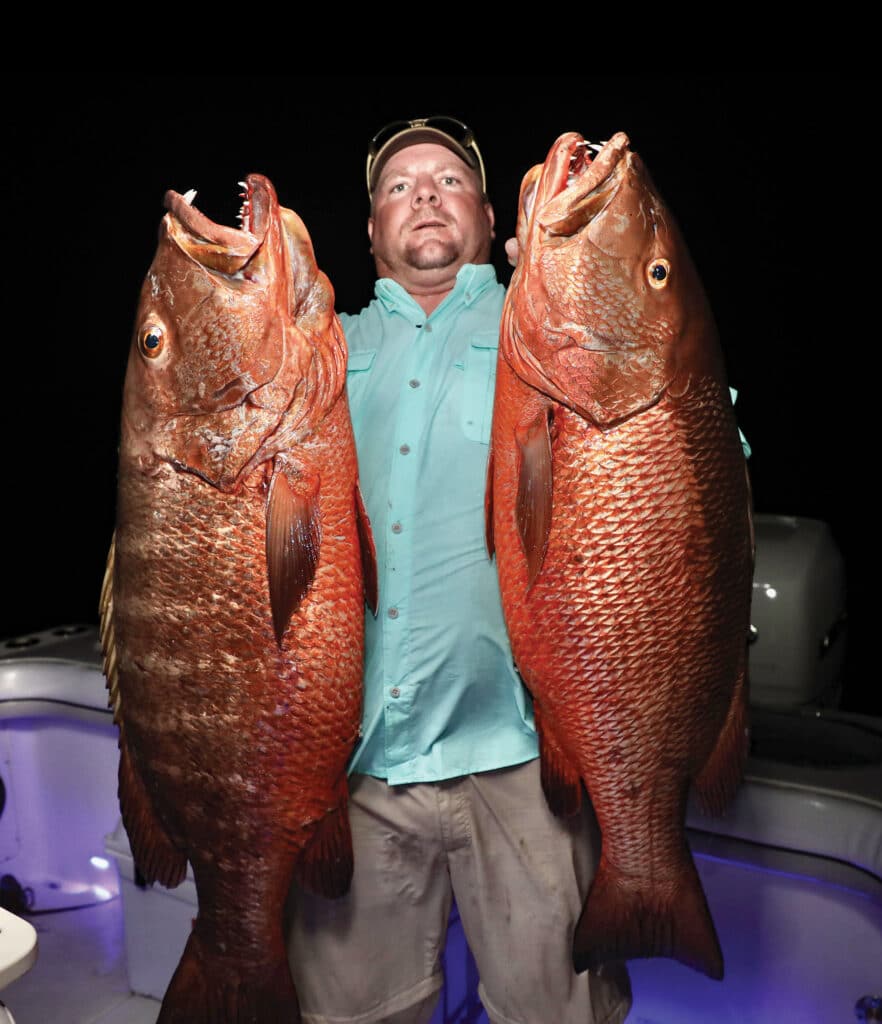
Sinking Huge Live Baits
Bottomfishing anglers strive for big grouper and snapper, despite the smaller ones being better table fare. Yet there’s something special about landing a monster grouper or snapper, and fishing huge live baits is a good way to get it done.
As in mahi trolling, small baits are often attacked by smaller bottomfish. Bump up the live bait’s size, and the odds of hooking a trophy-class fish rise considerably.
A reef drifting method of ours involves tipping a deep jig with a horse ballyhoo or whole squid. The jig, heavy enough to reach bottom between 70 and 250 feet, serves more as a sinker; gently lifting it over potential snags is the only required action. The offering’s large profile intimidates smaller fish and leaves it vulnerable to big ones. We’ve taken black grouper as heavy as 68 pounds this way, along with double-digit grouper and snapper.
Not-So-Mellow Yellow
A yellowtail snapper is deadly for big grouper, as are large grunts, oversized pinfish and goggle-eyes. Be aware that using federally managed species, including yellowtail, is generally not legal in federal waters. In state waters, the regulations vary from state to state. Be sure to check those regs before hooking up a yellowtail or any other managed reef fish species. Where it is not allowed, the following technique works well with large individuals of more typical baitfish species.
Lower a big live bait deep, bridled to a 3X-strong circle hook on 4 feet of 80- or 100-pound fluoro leader. Slide an egg sinker onto a 50- or 80-pound braid main line, and use a barrel swivel to join the line to the leader. For weights in excess of 10 ounces, use a three-way swivel to attach the line, leader and weight.
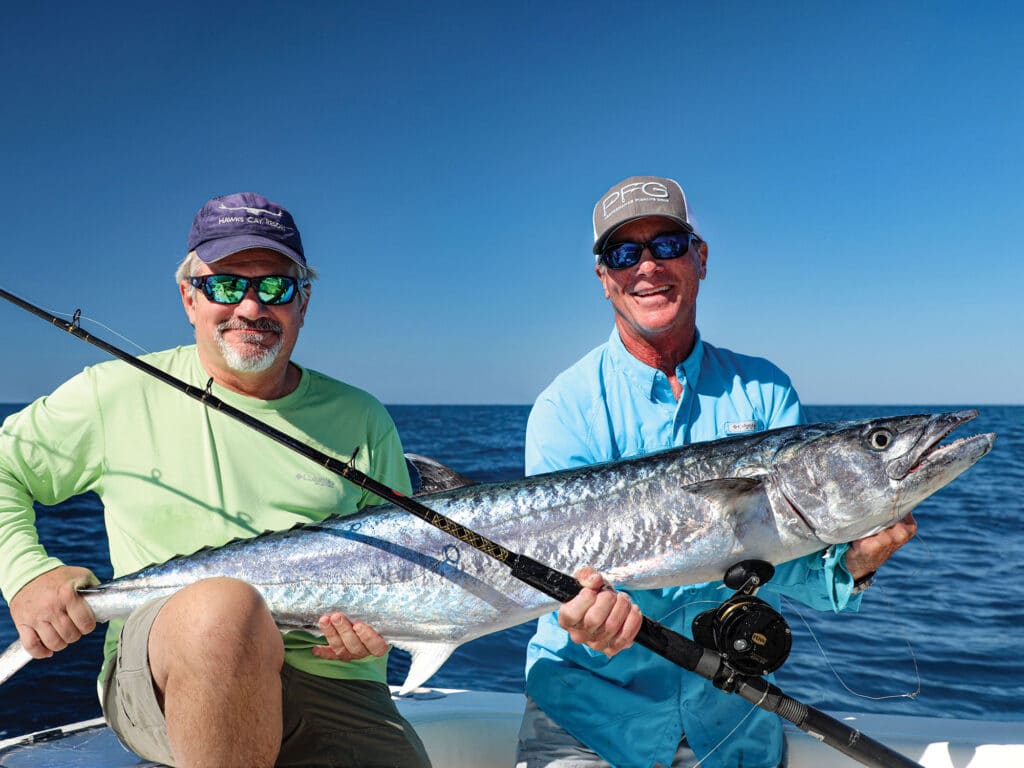
Fit For a King
While yellowtailing or bottomfishing, free-line a legal-size, live yellowtail or other live baitfish on a light wire leader and a balloon float well behind the chum slick. Place the outfit in a holder and resume catching yellowtails or dropping for grouper. Some of the largest king mackerel are caught this way. Ditto using live Spanish mackerel, oversized blue runners and goggle-eyes. I’ve enjoyed great luck with a stinger rig comprised of two 7/0 inline circle hooks and either titanium or single-strand metallic leader of around 50 pounds. I place one hook in front of a bait’s dorsal fin and leave the stinger hook free-swinging. Place the outfit in a holder and let the circle hooks set themselves.
Read Next: How to Catch Live Bait
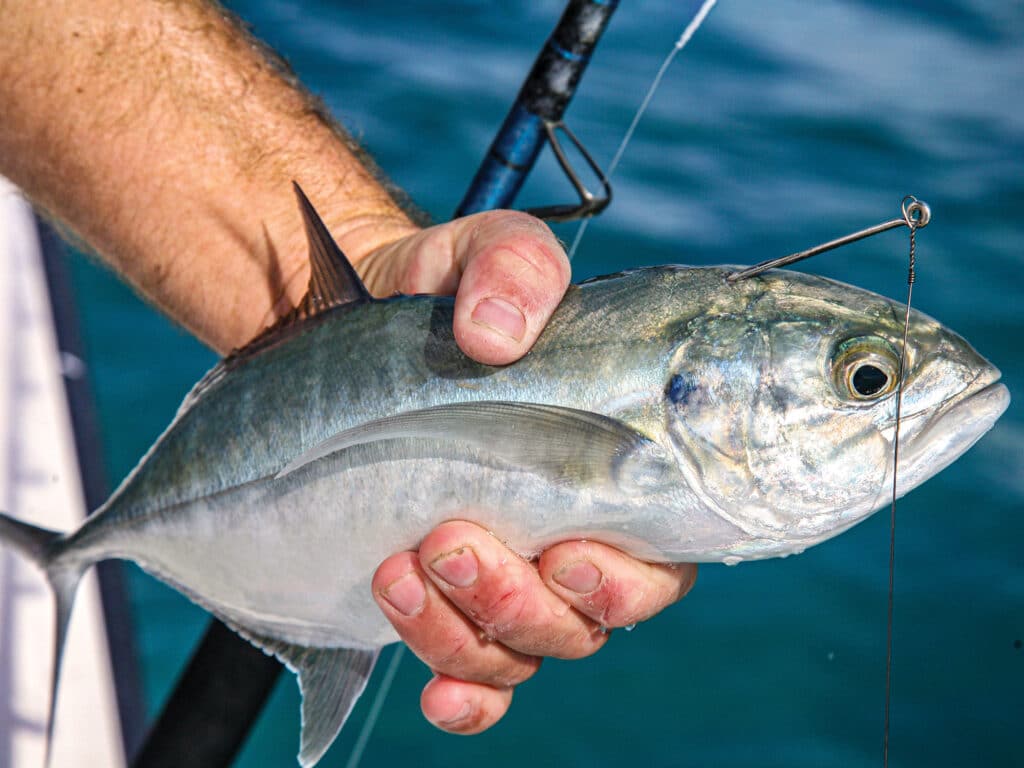
Live Baits for Snapper at Night
Large snapper consume big live baits, as is evident during the July through September cubera snapper spawn off the Florida Keys. Here, live blue crabs and legal-sized live lobsters (when their season opens) are lowered to cuberas schooling above or nearby scattered sections of a wreck. Big blue runners work too, but getting these finfish past the barracudas, king mackerel, amberjacks and sharks might prove difficult. Yet it’s rare for these toothy predators to pick off a large crab or lobster.
Big is Better Inshore
I vividly recall trophy striped bass trips throughout the mid-Atlantic and Northeast, where the locals crushed them on large live menhaden and jumbo eels. We catch our trophy snook and tarpon the same way—but with large live mullet, even soaking half a freshly caught mullet on the bottom. This tactic weeds out smaller fish and plays well on larger ones.
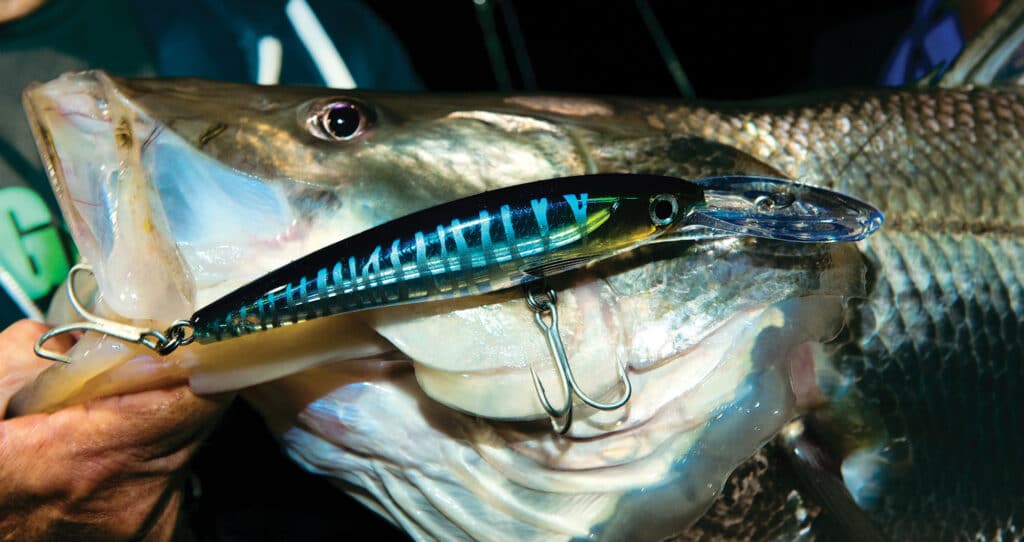
Ditto when trolling swimming plugs. Whereas small and medium plugs score a variety of fish, large plugs intimidate smaller ones from striking—but not the trophies. Case in point: When trolling for large snook and tarpon within South Florida inlets along lit bridges at night and in deep canals and channels, large lipped Rapala lures produce well. I use different models based on water depth. These plugs also catch big grouper and even monster barracuda from these same waters and inlets.
Patience is a Virtue
Using big live baits for a shot at a trophy fish isn’t for the restless. In fact, it can be downright boring, despite sporadic blitzes. You’re looking to land a knockout punch, not build points on the score card.
If catching big fish is your specialty, you already know the merits of large baits. But if you’re yearning to score a trophy, or simply to improve the average size of the ones you’ve been catching, devote some time and love to big baits. They’re likely to return the favor in a very impressive way.

